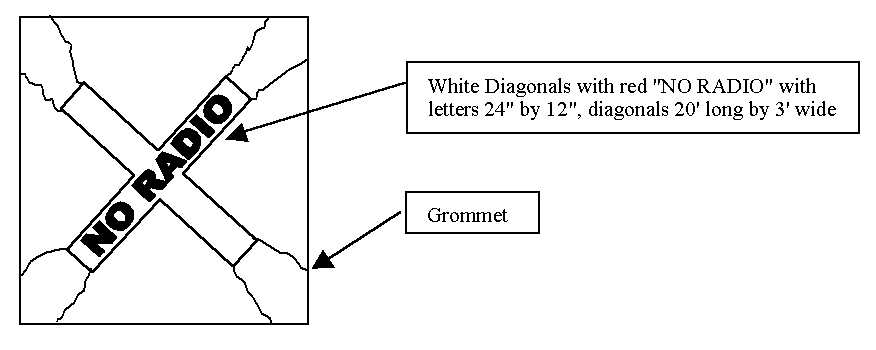Index
580
-- Page 581 --
582
12/10/15 AIM
transmissions, including those from helicopters. The transponders, radar altimeters, and DME equipment,
following practices are recommended. and ELTs.
2. Recommended Practices (2) Whenever possible, make radio calls to
the platform being approached or to the Flight
(a) Personnel Conducting Perforating
Following Communications Center at least one mile
Operations. Whenever perforating operations are
out on approach. Ensure all communications are
scheduled and operators are concerned that radio
complete outside the 1,000 foot hazard distance. If no
transmissions from helicopters in the vicinity may
response is received, or if the platform is not radio
jeopardize the operation, personnel conducting
equipped, further radio transmissions should not be
perforating operations should take the following
made until visual contact with the deck indicates it is
precautionary measures:
open for operation (no white "X").
(1) Notify company aviation departments,
helicopter operators or bases, and nearby manned g. Hydrogen Sulfide Gas Helideck/Heliport
platforms of the pending perforation operation so the Operational Hazard Warning(s)/Procedures
Notice to Airmen (NOTAM) system can be activated 1. Background. Hydrogen sulfide (H2S) gas:
for the perforation operation and the temporary Hydrogen sulfide gas in higher concentrations
helideck closure. (300-500 ppm) can cause loss of consciousness
(2) Close the deck and make the radio within a few seconds and presents a hazard to pilots
warning clearly visible to passing pilots, install a on/near offshore helidecks. When operating in
temporary marking (described in subpara- offshore areas that have been identified to have
graph 10-2-1i1(b)) with the words "NO RADIO" concentrations of hydrogen sulfide gas, the following
stenciled in red on the legs of the diagonals. The practices are recommended.
letters should be 24 inches high and 12 inches wide. 2. Recommended Practices
(See FIG 10-2-1.)
(a) Pilots
(3) The marker should be installed during
the time that charges may be affected by radio (1) Ensure approved protective air packs
transmissions. are available for emergency use by the crew on the
helicopter.
(b) Pilots
(2) If shutdown on a helideck, request the
(1) Pilots when operating within 1,000 feet supervisor in charge provide a briefing on location of
of a known perforation operation or observing the protective equipment and safety procedures.
white X with red "NO RADIO" warning indicating
perforation operations are underway will avoid radio (3) If while flying near a helideck and the
transmissions from or near the helideck (within visual red beacon alarm is observed or an unusually
1,000 feet) and will not land on the deck if the X is strong odor of "rotten eggs" is detected, immediately
present. In addition to communications radios, radio don the protective air pack, exit to an area upwind,
transmissions are also emitted by aircraft radar, and notify the suspected source field of the hazard.
FIG 10-2-1
Closed Helideck Marking - No Radio
Special Operations 10-2-3
 FIG 10-2-1
Closed Helideck Marking - No Radio
Special Operations 10-2-3
FIG 10-2-1
Closed Helideck Marking - No Radio
Special Operations 10-2-3